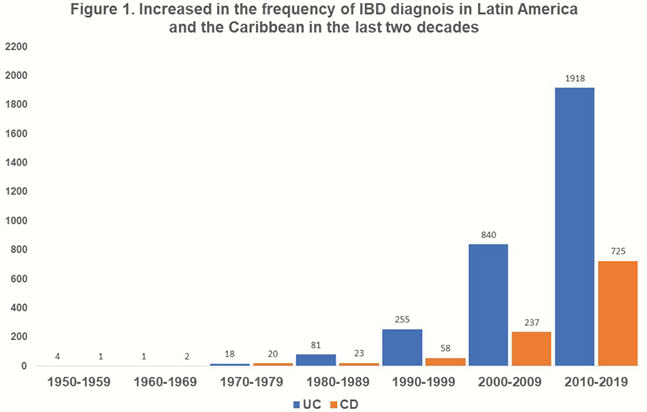P749 Epidemiological and clinical characterisation of inflammatory bowel disease (IBD) in Latin America and the Caribbean: The EPI-LATAM IBD study from the Pan American Crohn’s colitis organisation
J.K. Yamamoto-Furusho1, N.N. Parra-Holguín2, E. Grupo-Colombiano3, F. Bosques-Padilla4, G. Veitia-Velásquez5, E. Torres6, F. Piñol-Jiménez7, S. Bautista8, A. Frías-Santana9, K. Villa-Ovalles8, G. Otoya-Moreno10, B. Iadé-Vergara11, EPILATAM-Study Group
1National Institute of Medical Science and Nutrition Salvador Zubiran, Department of Gastroenterology, Mexico City, Mexico, 2IBD Clinic- Department of Gastroenterology- Instituto Nacional de Ciencias Medicas y Nutricion, Gastroenterology, Mexico, Mexico, 3Grupo Colombiano de Interés en EII, Gastroenterology, Bogota, Colombia, 4Hospital universitario Universidad Autonoma de Nuevo Leon, Gastroenterology, Monterrey, Mexico, 5Hospital Vargas de Caracas, Gastroenterology, Caracas, Venezuela- Bolivarian Republic, 6Universidad de Puerto Rico, Gastroenterology, San Juan, Puerto Rico, 7Centro Nacional de Cirugía de Mínimo Acceso, Gastroenterology, La Habana, Cuba, 8CEDIMAT Centro de Gastroenterología, Gastroenterology, Santo Domingo, Dominican Republic, 9IBD Hospital Moscoso Puello, Gastroenterology, Santo domingo, Dominican Republic, 10Consultorio Privado, Gastroenterology, Lima, Peru, 11Casmu Cosem, Gastroenterology, Montevideo, Uruguay
Background
Inflammatory bowel disease (IBD) is currently recognised as a global health problem, since its incidence and prevalence have increased significantly worldwide in recent years. Studies in Latin America are only limited to reporting incidence and prevalence, so our main objective is to report the clinical and epidemiological characteristics of IBD in Latin American and Caribbean countries.
Methods
This is a multicentre cohort study in which 8 Latin American and Caribbean countries were included: Colombia, Cuba, Mexico, Peru, Puerto Rico, Dominican Republic, Uruguay and Venezuela during the period from August 2017 to October 2019. Two study groups were conducted by geographic region due to their ethnicity, Group 1) Caribbean: Cuba, Puerto Rico and Dominican Republic, Group 2) Latin America: Colombia, Mexico, Venezuela and Peru. Statistical analysis was performed with the statistical programme SPSS v.24. A value of
Results
This study included a total of 4216 IBD patients from 8 countries. The CD was more frequent than UC in the following countries: Puerto Rico with 68.5%, Dominican Republic 56.3% and Peru with 53.1%, while in the rest of the countries the frequency of UC predominated, in Colombia by 79.2%, Venezuela in 78.4%, Cuba in 69.9% and Mexico in 75.8%. The Caribbean countries had a significantly higher frequency in the fistulising phenotype in CD with 65.1% (

Conclusion
This is the first large and multicentre study in Latin America and the Caribbean which showed significant increase in the diagnosis of IBD in the last two decades as well as the differences in clinical and epidemiological characteristics between both regions.


